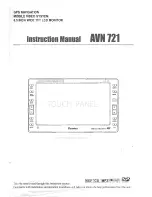
CAP 413
Radiotelephony Manual
Chapter 4 Page 18
2
Aerodrome Flight Information Service Phraseology
2.1
Introduction
2.1.1
Concise and unambiguous phraseology used at the correct time is vital to the smooth,
safe and expeditious running of an aerodrome and associated ATZ. It is not only the
means by which instructions and information are passed but it also assists pilots in
maintaining an awareness of other traffic in their vicinity, particularly in poor visibility
conditions.
2.1.2
Messages will not be transmitted to an aircraft during take-off, the last part of final
approach or the landing roll, unless it is necessary for safety reasons, because it will
be distracting to the pilot at a time when the cockpit workload is often at its highest.
2.1.3
Local procedures vary from aerodrome to aerodrome and it is impossible to give
examples to cover every situation which may arise at the multiplicity of different types
of aerodrome. Information in addition to that shown in the examples, e.g. time
checks, etc. may be provided as necessary.
2.2
Type of Service
2.2.1
As described in Chapter 2 the type of service provided at an aerodrome falls into one
of three categories. In this section the examples are confined to those used by Flight
Information Service Officers (FISOs). Phraseology for air traffic controllers may be
found in Chapter 4 paragraph 1 and that for Air/Ground Communication Service
Operators in Chapter 4 paragraph 5.
2.2.2
Whilst the RTF procedures used by air traffic controllers form the main content of this
publication it should be noted that the phraseology used by FISOs at aerodromes is
different from that used by controllers. A FISO at an aerodrome provides a service to
give information useful for the safe and efficient conduct of flights in the Aerodrome
Traffic Zone. From the information received pilots will be able to decide the
appropriate course of action to be taken to ensure the safety of flight. Generally, the
FISO is not permitted to issue instructions or advice to pilots of his own volition.
However, in granting or refusing permission under Rule 40 and 41 of the Rules of the
Air, FISOs at aerodromes are permitted to pass instructions to vehicles and personnel
operating on the manoeuvring area and information and instructions to aircraft moving
on the apron and specific parts of the manoeuvring area. Elsewhere on the
manoeuvring area and at all times in the air, information only shall be passed to pilots.
Further details on the passing of instructions by FISOs at aerodromes are contained
in CAP 410 Manual of Flight Information Services - Part B Aerodrome.
2.2.3
FISOs are also permitted to pass messages on behalf of other agencies and
instructions from the aerodrome operator. If they do so, they will include the name of
the agency so that pilots will be aware that the message comes from a legitimate
source, e.g. ‘Wrayton Control clears you to join ...’.
2.2.4
With the exception of issuing instructions to aircraft on the ground, FISOs are
reminded that the service they provide is an information service relating to the ATZ
and aerodrome. They must ensure that the information given to pilots is distinct and
unambiguous, as pilots will use this information for the safe and efficient conduct of
their flights.
2.2.5
A FISO may request pilots to make position reports e.g.downwind, final etc. These
requests do not have the status of instructions, although it is expected that most
pilots will comply.
31 March 2011
Summary of Contents for 413
Page 1: ...CAP 413 Radiotelephony Manual Edition 20 www caa co uk Safety Regulation Group ...
Page 2: ......
Page 3: ...CAP 413 Radiotelephony Manual Edition 20 Safety Regulation Group 17 November 2011 ...
Page 6: ...CAP 413 Radiotelephony Manual Amendment Number Amendment Date Incorporated by Incorporated on ...
Page 10: ...INTENTIONALLY LEFT BLANK ...
Page 18: ...INTENTIONALLY LEFT BLANK ...
Page 20: ...INTENTIONALLY LEFT BLANK ...
Page 68: ...INTENTIONALLY LEFT BLANK ...
Page 126: ...INTENTIONALLY LEFT BLANK ...
Page 162: ...INTENTIONALLY LEFT BLANK ...
Page 170: ...INTENTIONALLY LEFT BLANK ...
Page 178: ...INTENTIONALLY LEFT BLANK ...
Page 206: ...INTENTIONALLY LEFT BLANK ...
Page 248: ...INTENTIONALLY LEFT BLANK ...
Page 254: ...INTENTIONALLY LEFT BLANK ...
Page 264: ...INTENTIONALLY LEFT BLANK ...















































